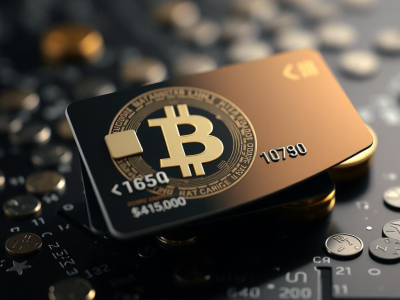
Utilize two-factor authentication (2FA) on your cryptocurrency card account. This measure adds an extra layer of protection against unauthorized access, making it significantly harder for cybercriminals to compromise your transactions.
Understanding the risks associated with online transactions is paramount. Cryptocurrency cards are not immune to fraud. Ensure that you regularly monitor your account statements and transaction history for any suspicious activity. Quick detection can mitigate potential losses.
Implement strong passwords that include a mix of letters, numbers, and special characters. Avoid using easily guessable information such as birthdays or common words. Change your password periodically to enhance security further.
Familiarize yourself with the specific guidelines provided by your card issuer regarding safe usage. Each provider may have unique measures in place to protect users from fraud; knowing these can enhance your safety while utilizing cryptocurrency for everyday transactions.
Be cautious when using public Wi-Fi networks. These connections can expose you to various security threats. If necessary, consider using a virtual private network (VPN) to encrypt your connection and safeguard your data during transactions.
The responsibility of ensuring security rests heavily on individual users. By adopting these protective measures, you can significantly reduce the risks associated with using a cryptocurrency card and enjoy smoother, safer financial interactions.
Choose a Reputable Provider
Selecting a trustworthy cryptocurrency card provider is fundamental for minimizing risks associated with transactions. Consider the following guidelines:
- Research Background: Investigate the provider's history, reputation, and user reviews. A well-established company usually has a track record of security measures in place.
- Regulatory Compliance: Ensure that the provider adheres to relevant regulations and standards within your jurisdiction. This can indicate their commitment to safety.
- Security Features: Examine the security measures offered, such as two-factor authentication (2FA), encryption protocols, and fraud detection systems.
- Transparent Fees: Review the fee structure closely. Hidden fees can diminish your overall transactions and might indicate a lack of transparency.
- User Support: Evaluate the customer support options available. Responsive support can assist in resolving issues swiftly, enhancing your overall experience.
- Insurance Policies: Check if the provider offers any insurance against loss or theft of funds stored on the card.
Your understanding of these factors will significantly enhance your safety while using a cryptocurrency card, ensuring secure transactions without unnecessary exposure to risks.
Enable Two-Factor Authentication
Activate two-factor authentication (2FA) on your cryptocurrency card. This measure significantly enhances security by requiring a second form of verification in addition to your password. Use an authenticator app rather than SMS for better safety against phishing attacks.
Understand the risks associated with single-factor authentication, as it leaves your account vulnerable to unauthorized access. By implementing 2FA, you add a layer of protection that demands both something you know (your password) and something you have (a temporary code generated by the authenticator).
Follow these guidelines to set up 2FA:
- Select an authenticator app like Google Authenticator or Authy.
- Link the app to your cryptocurrency card account by scanning a QR code provided during setup.
- Store backup codes securely, as they can help regain access if you lose your device.
Regularly review and update your 2FA settings to stay ahead of potential threats. Keep your devices secure and updated to mitigate risks further. Prioritize safety through these protective measures, ensuring that your cryptocurrency card usage remains secure against emerging threats.
Monitor Transactions Regularly
Regularly reviewing your transaction history is a fundamental safety measure. Set aside time weekly to examine all transactions associated with your cryptocurrency card. Look for any unauthorized or suspicious activity that could indicate security breaches.
Understanding transaction patterns helps in identifying anomalies quickly. If you notice transactions that you did not initiate, report them immediately to your provider for further investigation and protection against potential fraud.
Consider using tools or apps that provide alerts for every transaction made with your card. These notifications can serve as an additional layer of security, allowing for immediate action if unexpected charges occur.
Be aware of the risks tied to sharing personal information related to your card. Ensure that any platforms or services you use are reputable and have strong security measures in place to safeguard your data.
Maintaining a habit of monitoring your transactions not only enhances your protection but also contributes to a better understanding of how your cryptocurrency assets are being utilized. This vigilance is key in mitigating risks and ensuring the overall integrity of your investments.
Protect Your Private Keys
Store your private keys offline using hardware wallets or secure paper backups. This measure significantly reduces risks associated with online threats. Avoid keeping private keys on devices connected to the internet, as malware can compromise their security.
Implement strong passwords and encrypt files containing your private keys. Utilize password managers for added safety, ensuring that no one can access your sensitive information without proper authorization.
Regularly update your security measures and software. Outdated systems may expose vulnerabilities that could be exploited during cryptocurrency transactions. Stay informed about potential threats and adapt accordingly.
Limit access to your private keys by using multi-signature wallets, which require multiple approvals for transactions, adding an additional layer of protection. This enhances overall security, making unauthorized access more difficult.
Be cautious when sharing information regarding your cryptocurrency card or transactions. Educate yourself on phishing attempts and fraudulent schemes targeting cryptocurrency users to avoid falling victim to scams.
By following these guidelines, you significantly enhance the safety of your private keys, minimizing potential risks associated with cryptocurrency usage.


You can be the first!